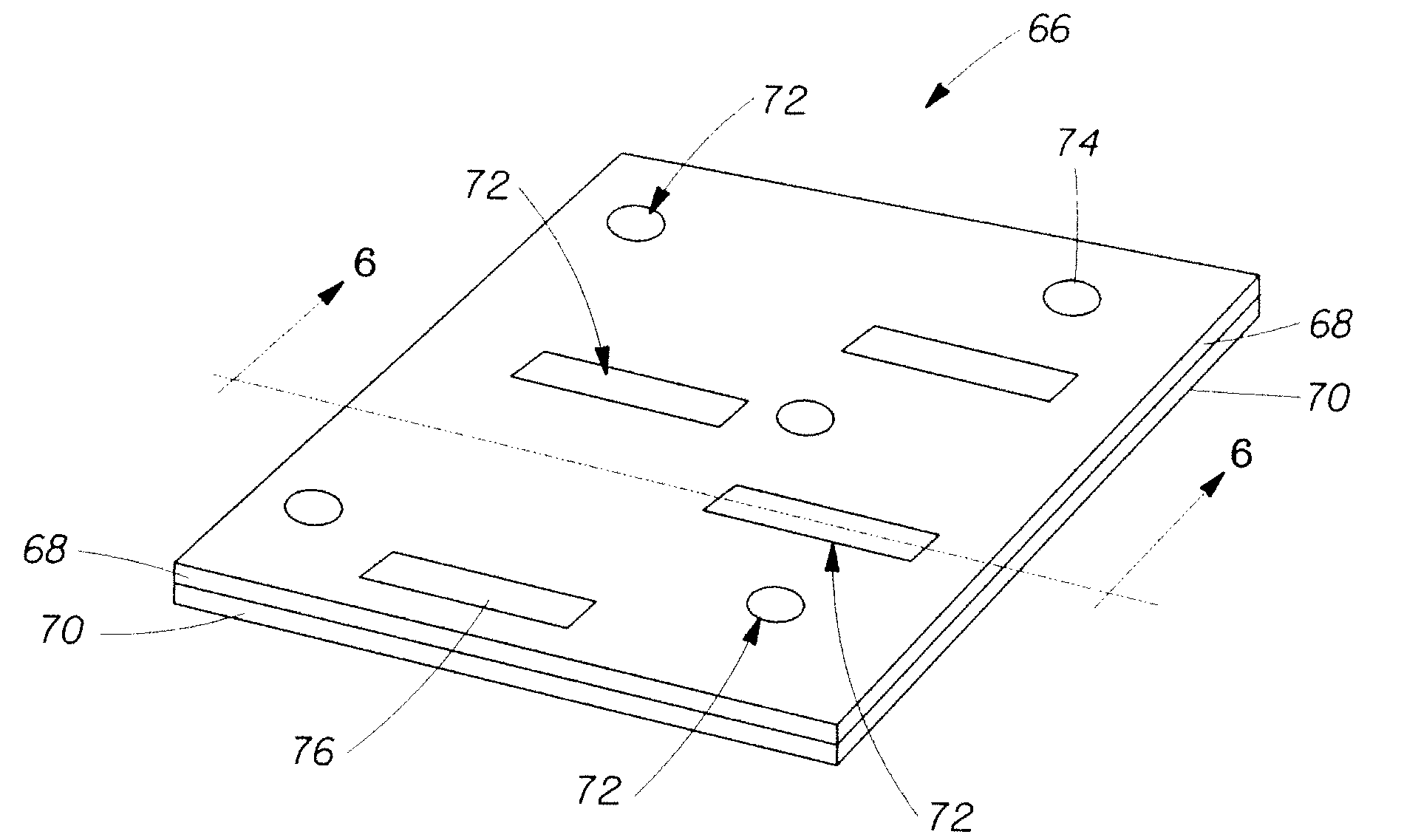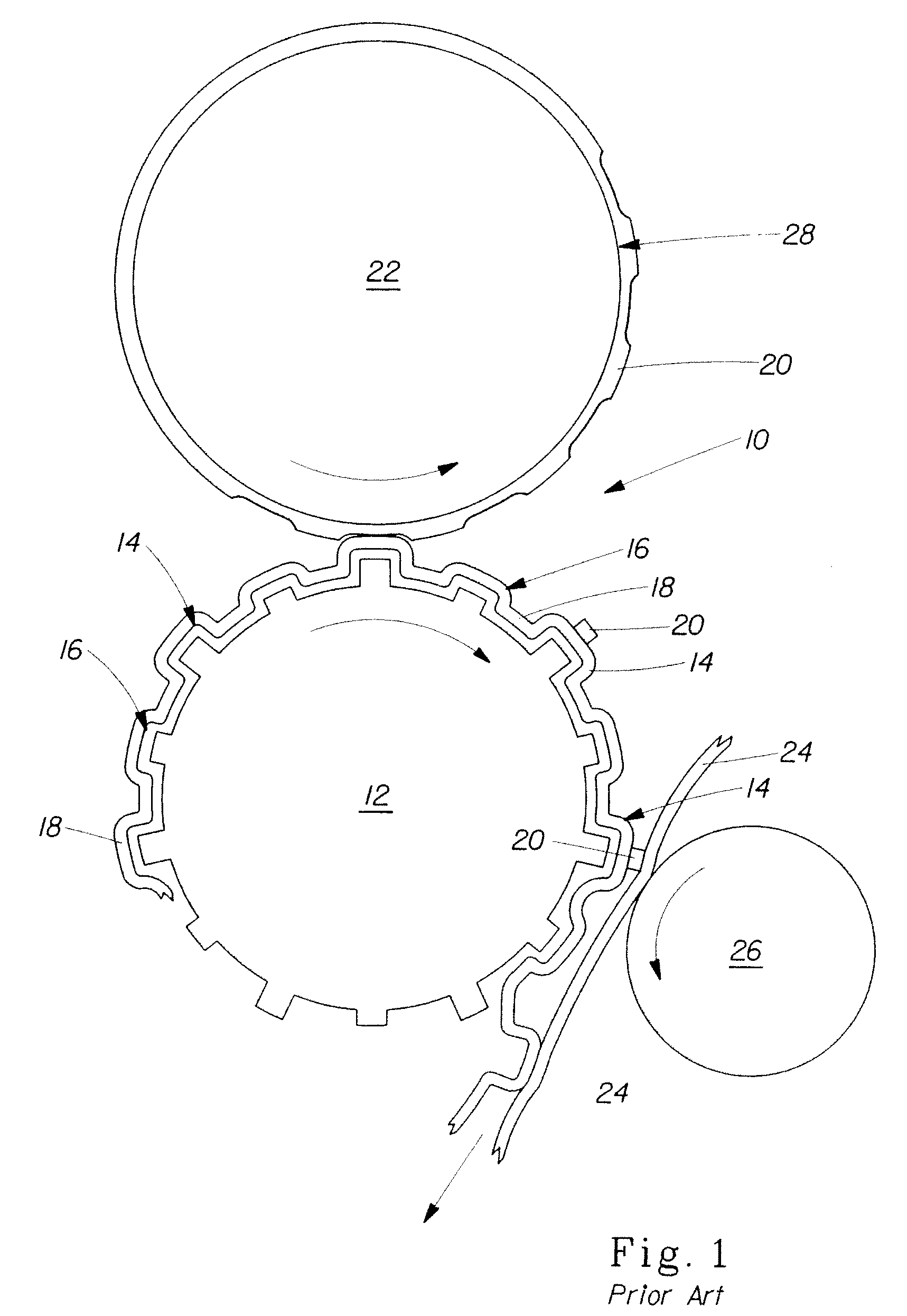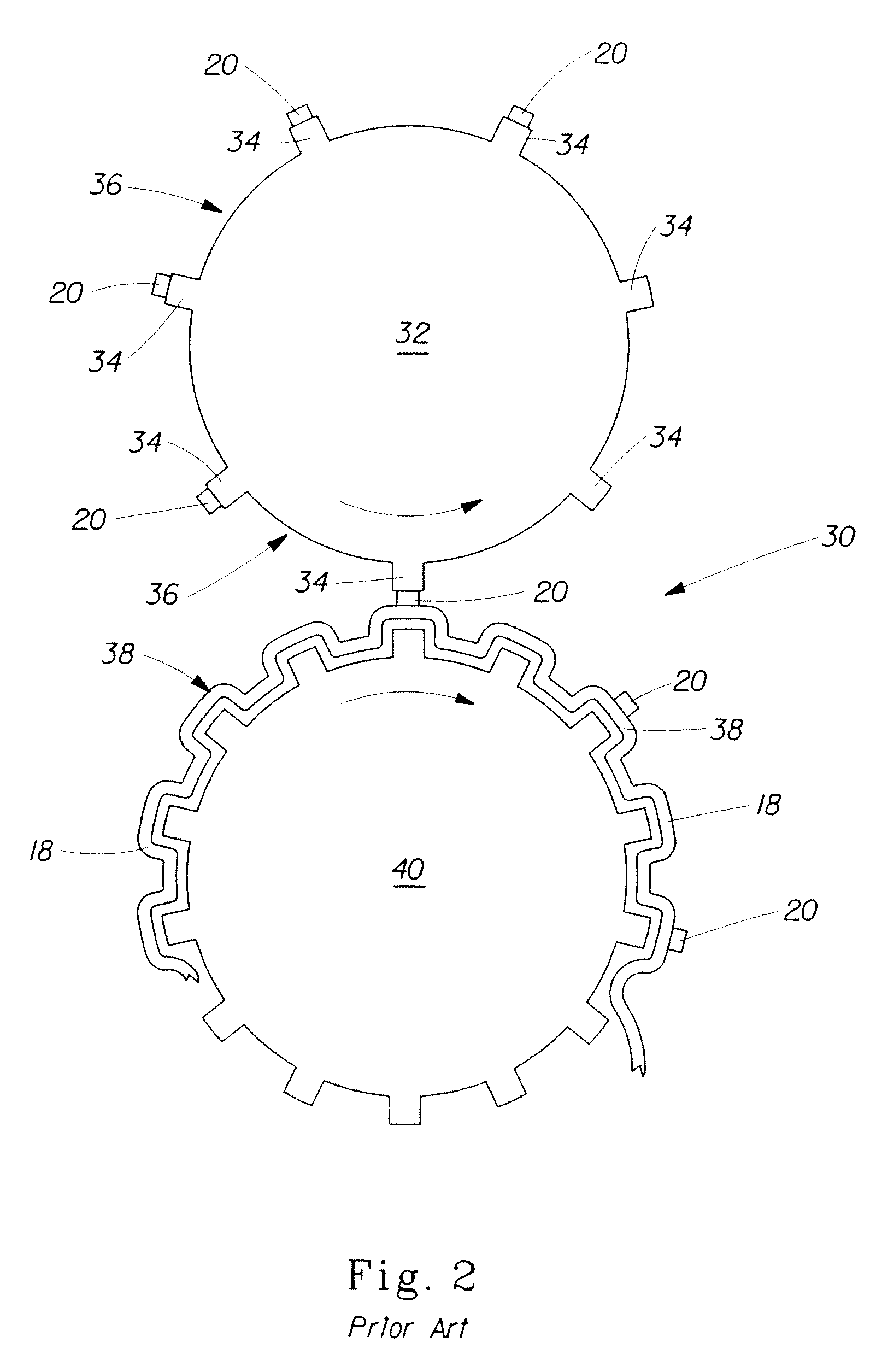Multi-ply fibrous structures and processes for making same
a fibrous structure and multi-ply technology, applied in the field of multi-ply structure, can solve the problems of large patterned roll fabrication complexity and variation in embossing clarity, inadequate plybonding, and relatively high emboss area that needs to be bonded
- Summary
- Abstract
- Description
- Claims
- Application Information
AI Technical Summary
Benefits of technology
Problems solved by technology
Method used
Image
Examples
Embodiment Construction
Definitions
[0027]“Fibrous structure” as used herein means a structure that comprises one or more filaments and / or fibers. In one example, a fibrous structure according to the present invention means an orderly arrangement of filaments and / or fibers within a structure in order to perform a function. Nonlimiting examples of fibrous structures of the present invention include paper, fabrics (including woven, knitted, and non-woven), and absorbent pads (for example for diapers or feminine hygiene products).
[0028]Nonlimiting examples of processes for making fibrous structures include known wet-laid papermaking processes and air-laid papermaking processes. Such processes typically include steps of preparing a fiber composition in the form of a suspension in a medium, either wet, more specifically aqueous medium, or dry, more specifically gaseous, i.e. with air as medium. The aqueous medium used for wet-laid processes is oftentimes referred to as a fiber slurry. The fibrous slurry is then ...
PUM
| Property | Measurement | Unit |
|---|---|---|
| viscosity | aaaaa | aaaaa |
| viscosity | aaaaa | aaaaa |
| viscosity | aaaaa | aaaaa |
Abstract
Description
Claims
Application Information
 Login to View More
Login to View More - R&D
- Intellectual Property
- Life Sciences
- Materials
- Tech Scout
- Unparalleled Data Quality
- Higher Quality Content
- 60% Fewer Hallucinations
Browse by: Latest US Patents, China's latest patents, Technical Efficacy Thesaurus, Application Domain, Technology Topic, Popular Technical Reports.
© 2025 PatSnap. All rights reserved.Legal|Privacy policy|Modern Slavery Act Transparency Statement|Sitemap|About US| Contact US: help@patsnap.com



